Symptoms of Allergic Reactions
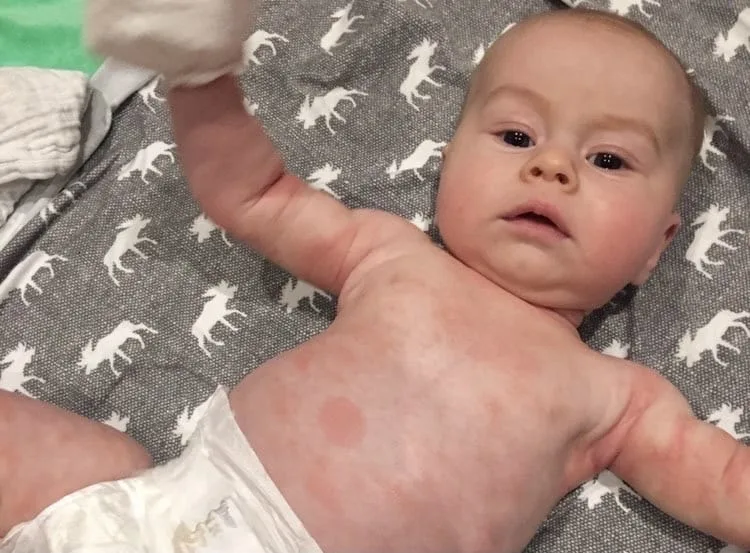
Need help starting solids? Solid Starts Compass℠ is our guided app experience to help you navigate first bites and beyond.
Is my baby having an allergic reaction?
Allergic reactions to food typically occur within two hours of consuming the allergenic food--and often just minutes.There is, however, a small percentage of babies who may experience a delayed allergic reactions, typically due to FPIES.
Generally, the more of the allergen consumed, the more severe the reaction is likely to be, so it is important to start small when introducing new foods to your baby. Lastly, your baby may not have an allergic reaction the first time they are exposed to the food, so be watchful on the second and subsequent exposures.
If you think your baby is having an allergic reaction, call emergency services immediately.
Symptoms of an allergic reaction vary from baby to baby, and can range from mild to severe. Generally, the severity of a reaction is judged by how many symptoms are present and the severity of those symptoms. Before you introduce potential allergens into your baby’s diet, know how to recognize the signs of an allergic reaction.
Common symptoms of an allergic reaction are described below.
Symptoms of mild allergic reactions:
Mild symptoms of an allergic reaction can include ONE of the following (more than one would constitute a more severe reaction):
Itchy or runny nose, sneezing
Itchy mouth
A few isolated hives, mild itching
Mild nausea or gastrointestinal discomfort
If you note any of the above symptoms, stop feeding the allergen and contact your pediatrician, family practitioner, or allergist for guidance. If your child is having multiple symptoms, call 9-1-1/local emergency services immediately and request an ambulance with autoinjectable epinephrine.

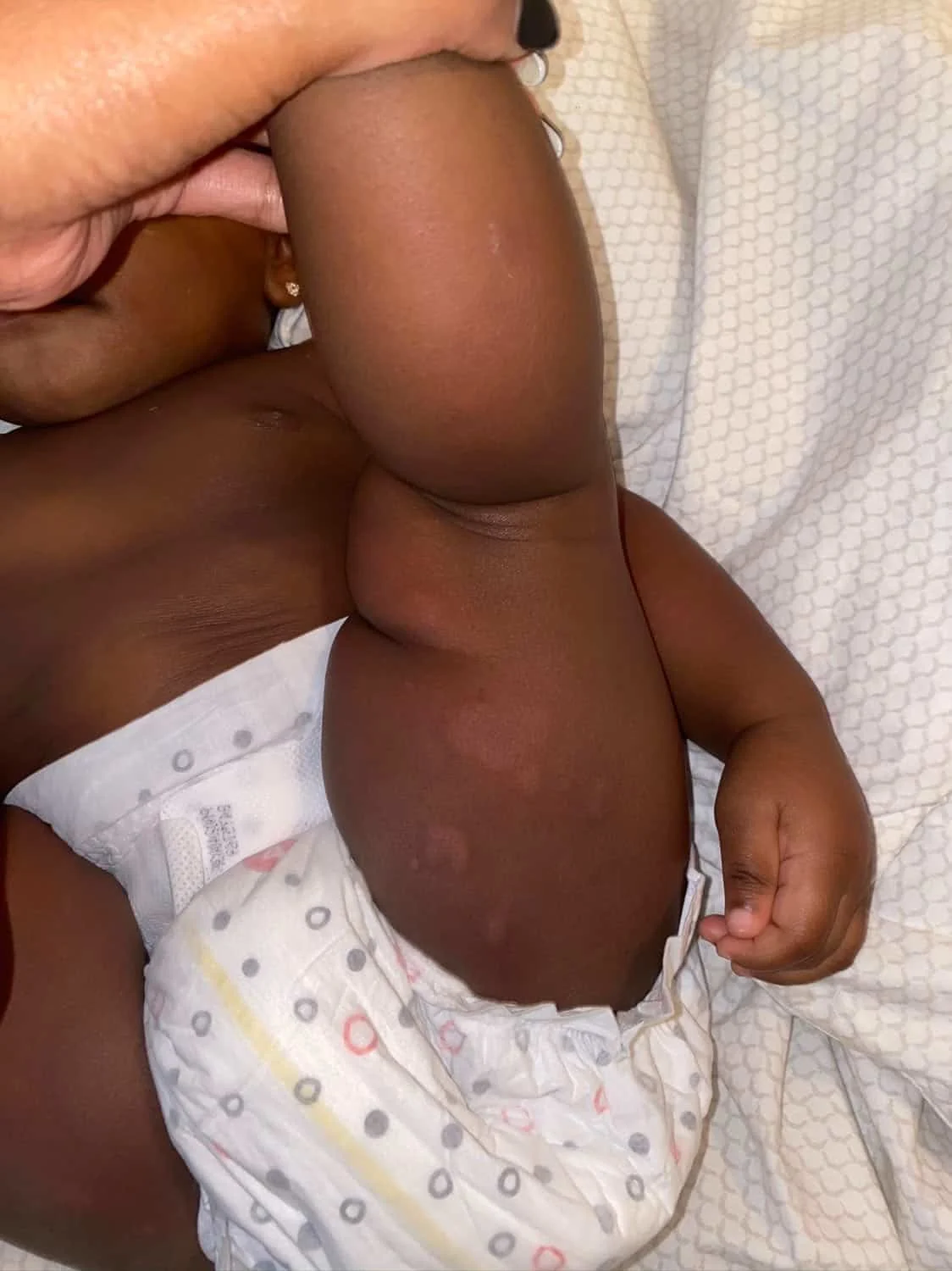
Symptoms of severe allergic reactions in babies:
More severe reactions may include any of the following, either alone or in combination:
Shortness of breath, wheezing, repetitive cough
Pale, ashen or bluish skin
Swelling of face, lips, or tongue
Widespread hives on body
Repetitive vomiting
Sudden tiredness/lethargy/seeming limp
If your child is having any of the above symptoms, call 9-1-1/local emergency services immediately and request an ambulance with autoinjectable epinephrine. Do not wait.

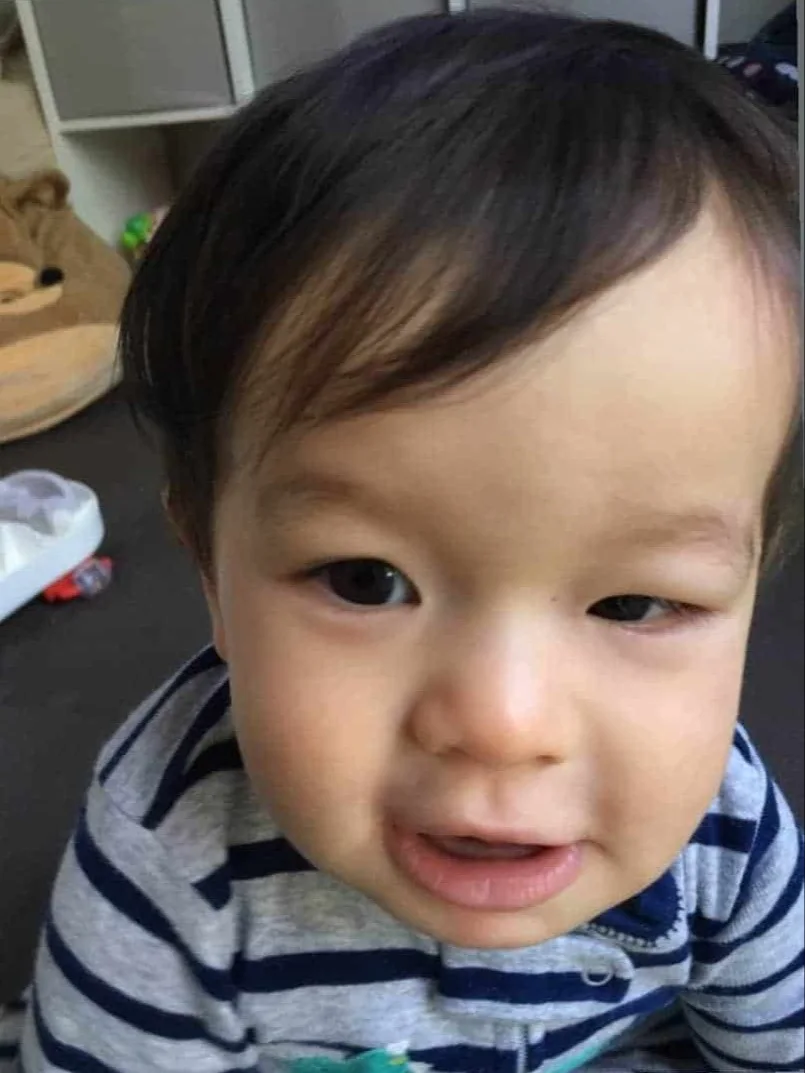
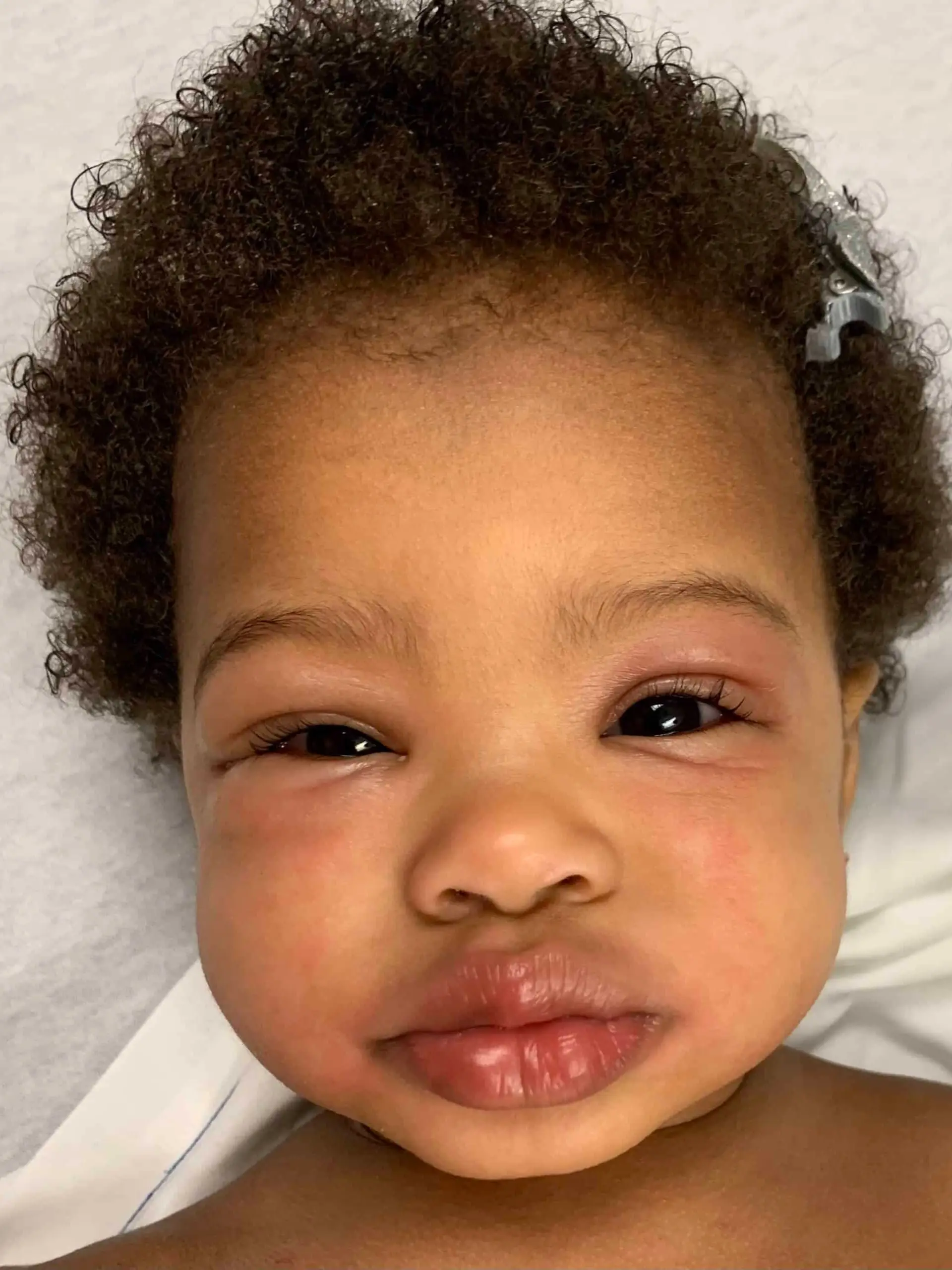


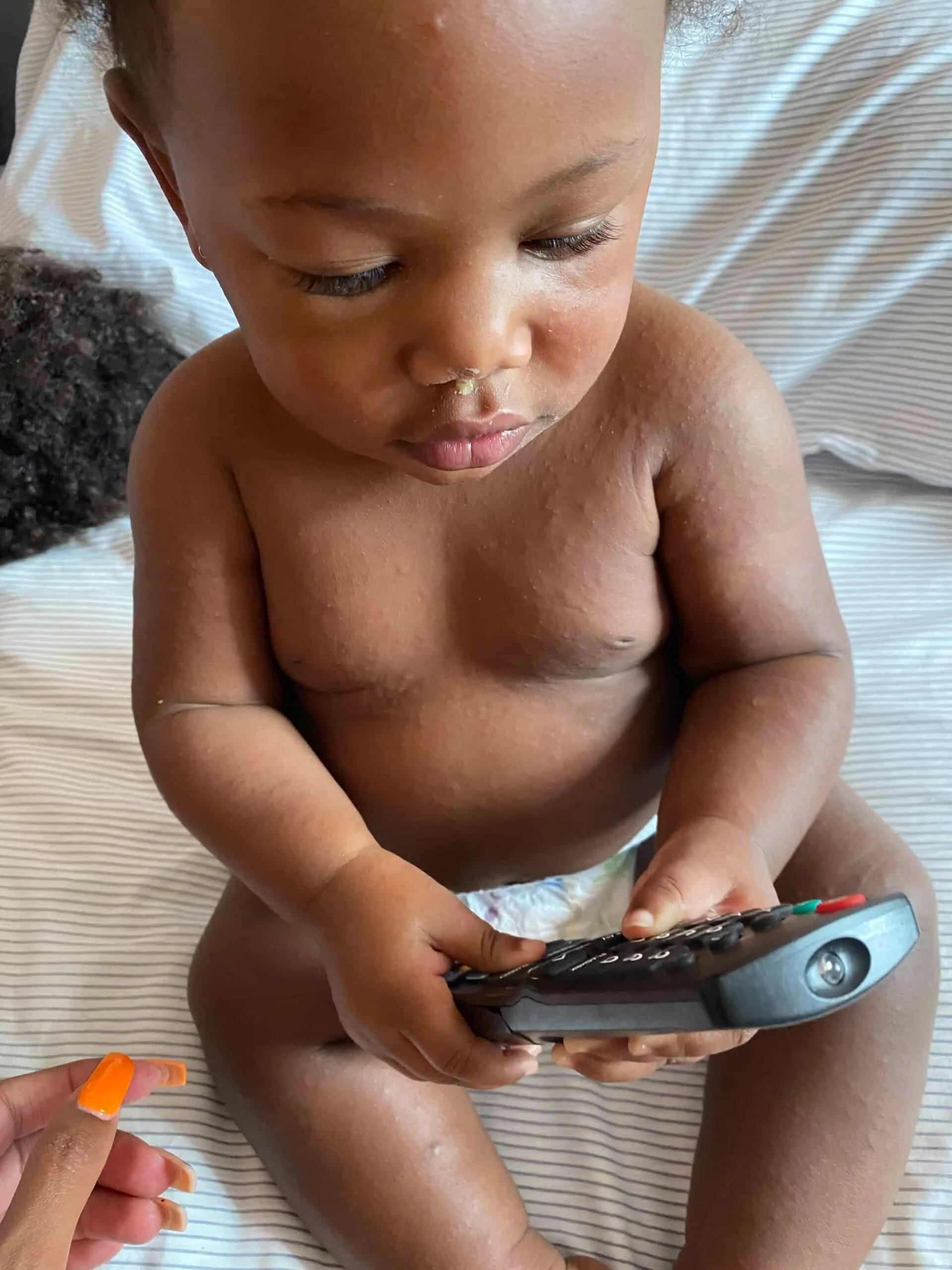
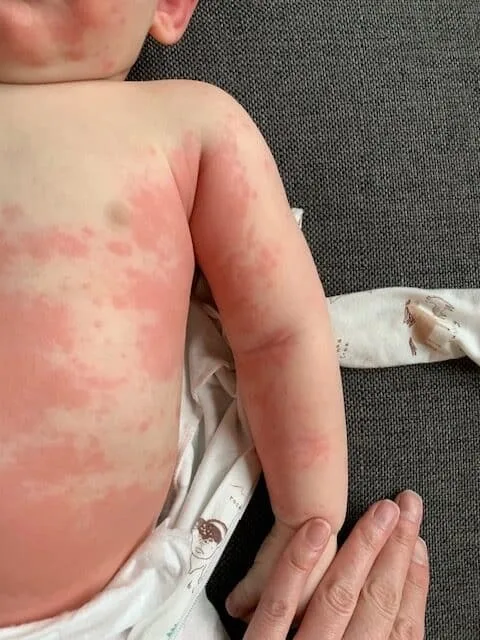
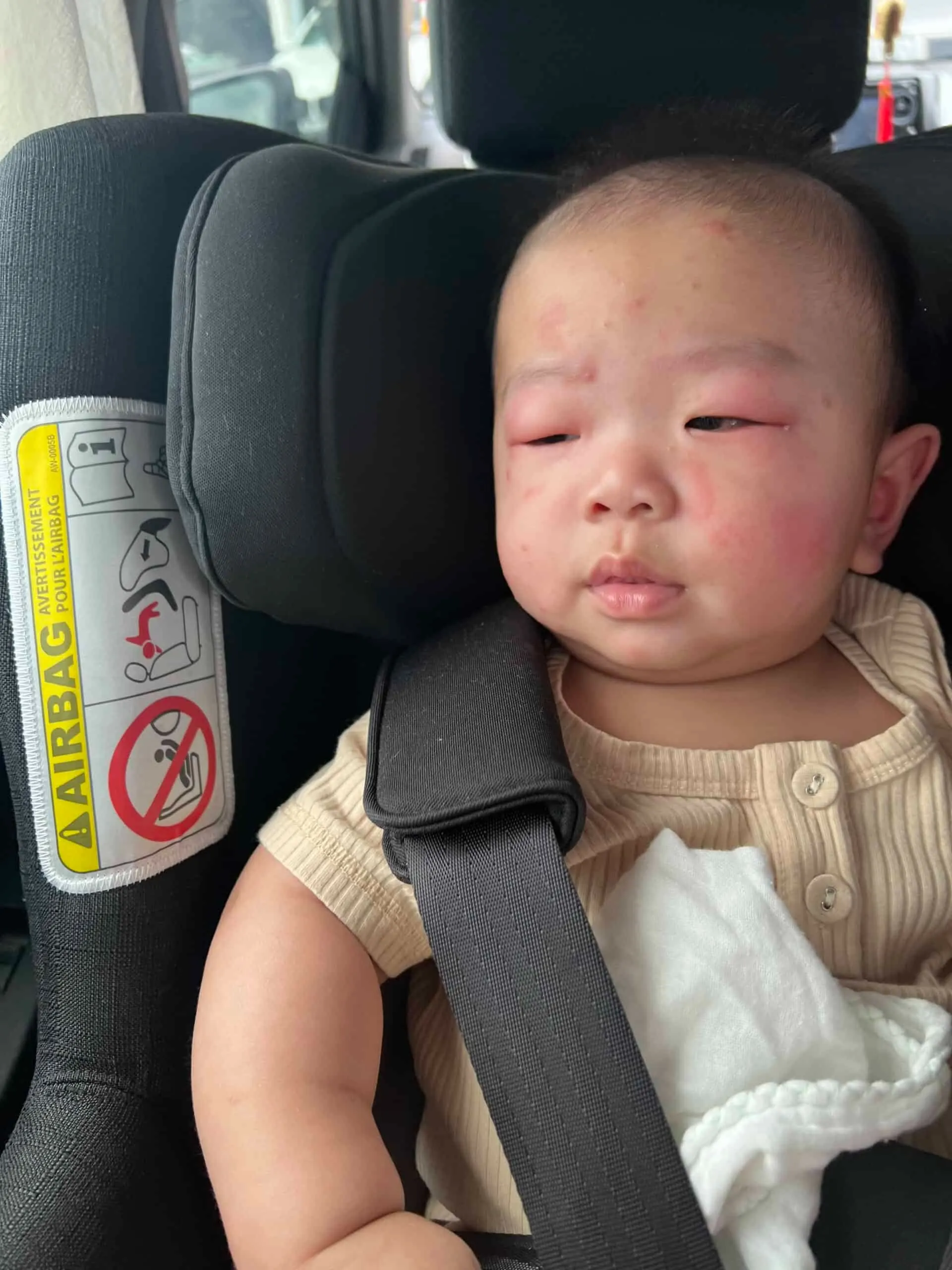


How to Administer Epinephrine to Babies & Toddlers
How to administer epinephrine to babies
Delayed symptoms & FPIES
FPIES (Food Protein-Induced Enterocolitis Syndrome) is a type of food allergy in children that can be severe and life-threatening. Unlike most allergic reactions (which can occur within minutes), FPIES allergic reactions occur within hours after consuming a particular food. For this reason, FPIES is sometimes known as a delayed food allergy. The most common food culprits of FPIES are cow’s milk products (such as formula), soy, oats, and rice, followed by other foods such as avocado, banana, barley, eggs, green beans, peas, meats, poultry, seafood, squash, and sweet potatoes. FPIES is extremely rare in exclusively-breastfed infants.
The classic presentation of FPIES is an infant who recently switched from breast milk to formula or started solids and begins vomiting between 1 to 4 hours and experiencing diarrhea between 5 to 10 hours after eating the specific food culprit. Other symptoms include low blood pressure, low body temperature, extreme pallor, repetitive vomiting, and significant dehydration. Thankfully, most cases of FPIES will completely resolve during toddlerhood. If a child has been diagnosed with FPIES, they must be followed closely by an allergist or immunologist.
A 6-month-old baby vomits in his sleep during an FPIES reaction.
How do I tell the difference between an eczema flare-up and an allergic reaction?
While babies with severe eczema are at an increased risk of developing food allergy, it is important to note that most babies with eczema do NOT have a food allergy. In fact, only one third of moderate-severe eczema cases in babies can be directly associated with food allergens. Ingestion of a food allergen can result not only in immediate skin symptoms (redness, hives, itching, swelling), but can also result in a delayed flare-up of pre-existing eczema. Therefore, it can be difficult to know if baby's eczema is occurring on its own, or if it was triggered by a previously unrecognized food allergen. For the most part, IgE-mediated allergic reactions to foods will appear quickly (within a few minutes to 2 hours after ingestion).
If there are no immediate signs of allergy (skin symptoms, respiratory distress, vomiting/diarrhea, etc.), and the only noted symptom is a delayed eczema flare-up that can be controlled with emollients and/or topical anti-inflammatory medication, the general recommendation is that the diet NOT be restricted. Eliminating a food from baby's diet in the hopes of clearing up mild or moderate eczema may actually be counter-productive, potentially increasing the risk of baby developing a more serious allergy to that food in the future.
Difference between rashes from acidic foods and an allergic reaction?
Rashes and skin irritation from eating acidic foods such as lemon, tomato, pineapple, orange and other citrus fruits are typically limited to the area where the food touched the skin and are short-lived; with some gentle washing, the rash should dissipate within ten minutes or so. With these kind of "contact rashes" (aka contact dermatitis) from the acidic foods, there are no other reactions or symptoms and the rash area is relatively small. For example, if baby has a widespread rash, such as all over their torso, it is likely an allergic reaction and not a contact rash. Similarly, if a baby has a short-lived rash on the chin (but no other symptoms), it is likely just a contact rash from the food or even baby's own saliva.
Rashes that occur after contact with or ingestion of a food allergen are typically present with other symptoms, such as hives and itching. In these cases, allergy-inducing antibodies recognize proteins in the food allergen and trigger white blood cells in the skin (called mast cells) to release histamine and other chemical mediators of allergic reactions into the surrounding tissues. This causes redness, hives, and itching. This type of rash may or may not go away on its own, and may require medication or medical attention, depending on its severity. As IgE antibodies and mast cells exist throughout the body, there is also a chance that the reaction might become more serious. Therefore, it's important to seek medical guidance if the rash does not resolve quickly after washing.

Critical info for caregivers
Should you or your baby's caregiver ever need to call 9-1-1/your local emergency services, things will move more quickly if you have the information below ready at-hand (this info is good to put in your own phone and on your refrigerator/wall for caregivers):
Birth date
Weight
Address
Insurance card (photo of, copy of)
Nearest hospital (or preferred hospital)
Special health info (e.g., baby was born prematurely at 30 weeks, etc.)
Reviewed by:
Dr. S. Bajowala, MD, FAAAAI. Board-Certified Allergist & Immunologist
Expert Tips Delivered to Your Inbox
Sign up for weekly tips, recipes and more!
The content offered on SolidStarts.com is for informational purposes only. Solidstarts is not engaged in rendering professional advice, whether medical or otherwise, to individual users or their children or families. No content on this site, regardless of date, should ever be used as a substitute for direct medical advice from your doctor or your medical or health professional, nutritionist, or expert in pediatric feeding and eating. By accessing the content on SolidStarts.com, you acknowledge and agree that you are accepting the responsibility for your child’s health and well-being. In return for providing you with an array of content “baby-led weaning” information, you waive any claims that you or your child may have as a result of utilizing the content on SolidStarts.com.
